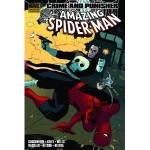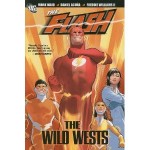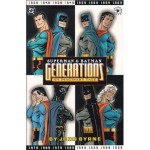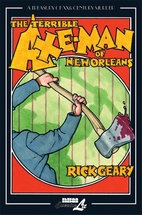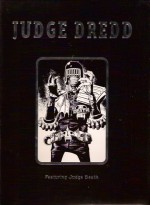
By Grant Morrison, Mark Waid, Howard Porter & various (DC Comics)
ISBN: 978-1-84023-110-6
By the time of the fifth collection featuring the breathtaking adventures of the World’s Greatest Superheroes, a pattern for gargantuan epics and mind-boggling conceptual endeavours had been well established and re-originators Grant Morrison and Howard Porter, whilst patiently laying the complex groundwork for a “Big Finish†saga were increasingly sharing creator credits with the cream of the comics-making premier division.
This book, collecting issues #24-33 of the monthly comic-book, also includes contributions from writers Mark Waid, Mark Millar & Devin Grayson and art by Mark Pajarillo, John Dell, Walden Wong & Marlo Alquiza, but begins with Morrison and Porter (with Dell on inks) in cracking form, introducing a brand-new super-team in ‘Executive Action’ as the American military, in the form of General Wade Eiling, announced its own metahuman unit “The Ultramarine Corpsâ€.
The four-person squad was officially tasked with pre-emptively defending America from paranormal threats, but as the JLA (and long-term DC fans) were aware Eiling had a long history of covert, “black-bag†and just plain illegal operations and remained duly suspicious. When the Corps stole the artificial body of major League foe Shaggy Man everyone concerned knew it was bad news but even they were unprepared for ‘Scorched Earth’ wherein Eiling set his Ultramarines and the beleaguered US army against the heroes.
Meanwhile New God members of the JLA were preparing for the imminent cosmic threat they had enlisted to confront (and which would finally materialise in the next volume) whilst Batman, Huntress and Plastic Man infiltrated the General’s base to discover his real motives…
The spectacular revelatory conclusion came in ‘Our Army At War’ (with art by Pajarillo & Wong) as Eiling’s plans were disclosed and the truth about the Ultramarines was uncovered. The net result was the disillusioned super-soldiers setting up their own operation independent of any national influence and beginning to gather like-minded costumed champions for a First-Strike force. They would soon return…
Time-travelling future-robot Hourman replaced the Martian Manhunter for a while and Mark Millar, Pajarillo, Wong & Marlo Alquiza crafted ‘The Bigger They Come…’ a delightfully retrospective yarn which saw size-changing physicist Ray Palmer return to service as the Atom when power-stealing super-android Amazo was accidentally reactivated.
The main event of this volume is a JLA/JSA team-up ‘Crisis Times Five’ (by Morrison, Porter & Dell). The thunderbolt Genie of Johnny Thunder returned with a new master and reality was grievously assaulted by unnatural disasters and magical monsters. Somehow, Triumph, an old friend and foe of the League, was at the heart of it all but promptly found himself trapped in a true Devil’s Bargain…
In ‘World Turned Upside Down…’ with reason on the run the assembled champions of League and Society battled rampant magical chaos, retrofitting a little more secret history as the assorted sprites, Djinn and pixies of the Silver Age DC Universe were revealed to be something far more sinister, and ‘Worlds Beyond’ saw those Genies reduced to civil war; concluding with ‘Gods & Monsters’ as a vast army of united heroes saved reality in the nick of time and space…
‘Inside Job’ (Waid and Devin Grayson with art by Pajarillo & Wong) is deeply embedded in company continuity, set during the Batman: No Man’s Land publishing event and referencing one of the League’s first cases (for which see JLA: Year One) as genetic supremacists Locus returned to make quake-devastated Gotham City their private Petri-dish and releasing a mutagenic terror-virus that not even the JLA could combat…
The book ends with Waid, Pajarillo & Wong’s ‘Altered Egos’ as Batman led a plainclothes mission to discover who – or what – was masquerading as Bruce Wayne: an unexpectedly violent mission which resulted in the return of the League’s most dangerous opponents…
Although Justice For All is as compelling and engrossing as the preceding four volumes the inevitable slippage into company history and continuity means that some tales here might well confuse or even bewilder newer readers; but for all that the action, wit, imagination and sheer fun of these stories should still provide immense enjoyment for devotees of Costumed Dramas and Fight ‘n’ Tights fiction.- and after all, isn’t that inconvenience exactly what footnotes, search-engines and back-issue comics shops are for?
Compelling, challenging and never afraid of looking back fondly or laughing at itself, the new JLA was an all-out effort to be Thrilling, Smart and Fun. For a brief moment in the team’s long and chequered career these were the “World’s Greatest Superheroes†and increasingly ambitious epics, broken up by short, sharp single-issue sorties reminded everybody of the fact. This is the kind of joyous frolic that nobody should ever outgrow and these are graphic novels to be read and re-read forever…
© 1998, 1999 DC Comics. All Rights Reserved.

